- Home
- Daniel Defoe
The Storm Page 2
The Storm Read online
Page 2
Of all these punishments the pillory was the worst and most feared. The prisoner was made to stand on a platform, usually in a market square or other public place, with his head and hands locked in an upright wooden stocks. There he stood, usually for an hour or two on a series of consecutive days, suffering whatever the assembled crowd of onlookers cared to throw, whether rotten fruit, animal waste, cobblestones or bricks. Pilloried prisoners often died from their injuries, and William Fuller had only barely escaped with his life, having nearly choked to death after he slipped from the stool on which he was standing. As it was, he suffered a broken leg and a fractured skull, as well as the humiliation of his exposure to a crowd that had taken evident pleasure in his downfall. Defoe, who worried that he was ‘Unfitt to bear the hardships of a Prison’, thought that he might be able to strike some kind of bargain with his pursuers and thus avoid the worst of their hostility.6 So he ran for cover to give himself time, and the hunt for the satirist was on.
The first arrests to be made in the search for Defoe were of George Croome, the printer of The Shortest-Way, and Edward Bellamy, a known agent of Whig propaganda, who admitted that he had been responsible for supplying Croome with the manuscript, and confirmed that Defoe was its author. A few days later, an advertisement appeared in the London Gazette for 7-11 January 1703, offering a £50 reward for information leading to the arrest of ‘Daniel de Fooe’. The following issue of the Gazette carried a revised and expanded version of the ad, which included what has since become a well-known description of Daniel Defoe the fugitive from justice:
St James’s, Jan. 10. Whereas Daniel de Foe alias de Fooe is charged with writing a Scandalous and Seditious Pamphlet, Entituled, The Shortest way with the Dissenters, Whoever shall discover the said Daniel de Foe, alias de Fooe, to one of Her Majesty’s Principal Secretaries of State, or any of Her Majesty’s justices of the Peace, so as he may be apprehended, shall have a Reward of 50 l. which Her Majesty has ordered immediately to be paid upon such Discovery:
He is a middle Sized Spare Man, about 40 years old, of a brown Complexion, and dark brown coloured Hair, but wears a Wig, a hooked Nose, a sharp Chin, grey Eyes, and a large Mould near his Mouth, was born in London, and for many years was a Hose Factor in Freeman’s-yard, in Cornhill, and now is Owner of the Brick and Pantile Works, near Tilbury-Fort in Essex.7
The arrests of Bellamy and Croome had already unsettled Defoe, but the wanted notice, with its detailed description (Cromwellian wart and all) and its reward offered in the name of the Queen herself, nevertheless came as a shock: £50 was a considerable inducement, more than enough for someone to live on for a year, and it was ten times the amount that was offered in the press for the capture of a deserting soldier. Even Jack Sheppard, the famous thief and prison-breaker, whose life story Defoe would later write up for the papers, was only worth a £20 reward. But a seditious author was regarded as a far greater menace than either a prison-breaker or a deserter, for it was as if he had publicly declared himself to be an enemy of the state, which is why the pursuit of Defoe came to occupy the attentions of some of the most powerful men in the land: Robert Harley, Earl of Oxford, the Speaker of the House of Commons; Sidney Godolphin, First Earl of Godolphin, the Lord High Treasurer; and Daniel Finch, Earl of Nottingham, the Secretary of State for the Southern Region and an avowed enemy of the Whigs, to whom the responsibility of actually finding Defoe was given. ‘Don Dismal’, as Defoe went on to call the Earl of Nottingham, was to find this a difficult and exasperating task, and on 2.5 February 1703, given Defoe’s continuing evasion, he ordered that a copy of The Shortest-Way ‘be burnt by the hands of the common Hangman, tomorrow in New Palace Yard’.8 The sentence was carried out the next day, as instructed.
Defoe, meanwhile, had begun the negotiations which he hoped would soften his enemies. He sent his wife, Mary Tuffley, to face the Earl of Nottingham in person, but Don Dismal merely repeated his demand that Defoe give himself up to the authorities. Defoe then wrote him a pleading letter in which he drew what he hoped was an affecting picture of ‘the Cries of a Numerous Ruin’d Family’, and offered to answer written questions in return for a sentence ‘a Little More Tollerable to me as a Gentleman, Than Prisons, Pillorys, and Such like, which are Worse to me than Death’.9 He could hardly have expected Dismal Daniel to react to the letter with sympathy, but he ended it with an offer to serve the Queen ‘with my hand, my Pen, or my head’, which may well have roused the interest of his pursuers. They knew how effective Defoe had been in the service of William III, and there was no denying that his talents as a propagandist and a spy could be put to good use by the new administration. But they remained intent upon catching him first, and were not yet prepared to come to an arrangement with someone they had no reason to trust.
Defoe was finally captured on 21 May 1703, having been betrayed for the reward by an anonymous informer. When he was arrested, at a house in Spitalfields belonging to a French Huguenot weaver named Nathaniel Sammen, he had ‘many Libells and papers’ on his person, including, it was alleged, an obscene poem that he had written which described the knighting of Dr David Hamilton, physician to the Queen.10 It took the Earl of Nottingham several days to go through these various papers, but they turned out to contain nothing of any value to the government. Nevertheless, the government remained convinced that Defoe was in the pay of a group of Whig conspirators who were loyal to the ideals of the late King William, and that The Shortest-Way was one of their attempts to destabilize the new regime. It is unclear, even now, whether there were reasonable grounds for the Tories’ suspicion, but Defoe maintained throughout these events that his sermon had only ever been ironic in intention, not inflammatory. The fault, in other words, lay with the reader, not the writer, a defence which Defoe was soon to use again, in his next mock sermon, The Lay-Man’s Sermon upon the Late Storm, when he warns the reader that ‘he that expected it otherwise than it is tis his Fault, and not Mine’ (p. 186). As Defoe had just discovered, although not for the last time in his writing career, the problem with making irony seem real is that the irony is often lost on its audience.
As soon as he was arrested Defoe was committed to Newgate Prison, where he was interrogated for two days by the Earl of Nottingham, who demanded to know who had paid him for his work. Whether or not he had anything to confess, Defoe refused to answer any of Dismal’s questions, and on 5 June Nottingham had no choice but to release the prisoner on bail, ordering him to appear in court a month later to face charges. On 5 July he appeared as requested and was charged with seditious libel, the indictment going out of its way to stress that the publication of The Shortest-Way had been a ‘direct affront to Queen Anne’.11 Given the wording of the indictment and the obvious animosity of the judges who were appointed to the hearing two days later, Defoe was advised by his defence attorney that the best he could do was to plead guilty and ask for mercy. Defoe reluctantly did what he was told, and the Old Bailey trial, the result of nearly seven months of official investigation, was over in a matter of minutes.
Defoe’s sentence, however, was tougher than that which he had been led to expect: a fine of 200 marks (about £133), three days in the pillory, and a return to Newgate Prison for an unspecified period to await Her Majesty’s pleasure ‘till all be performed’. Given that he was then on the verge of bankruptcy, the payment of the fine was unlikely to be ‘performed’ for a very long time to come. He was also made to undertake to remain on good behaviour for seven years, which effectively translated into a vow of publishing silence: unthinkable for a writer as compulsive as Defoe. He referred to it, ironically, in his Essay on the Late Storm (1704), as his ‘sleep of legal Death’ (p. 211); ironically, because the period immediately following this sentence of silence was his busiest yet in terms of writing and anonymous publication. By the end of July 1704, only twelve months after the sentence was imposed, Defoe had written and published twenty new works, including the three which are reprinted here.
Defoe had managed to escape han
ging or whipping, but he still had to face the prospect of ‘Prisons, Pillorys, and Such like, which are Worse to me than Death’. He felt, with some justification, that he had been punished not merely for The Shortest-Way, but for all the other satires he had written. The judges and politicians whom he had mocked in the past had taken their opportunity for revenge. So he appealed against his sentence, complaining that he had agreed ‘to give the Court No Trouble but to plead Guilty to the Indictment, Even to all the Adverbs, the Seditiously’s, the Maliciously’s, and a Long Rapsody of the Lawyers et Ceteras; and all this upon promises of being us’d Tenderly’.12 Defoe thus found himself being interrogated again, this time in the presence of the Queen herself, but his refusal to answer repeated questions about his part in a supposed anti-government conspiracy meant that his appeal was quickly turned down. His dates with the pillory were set for the last three days in July: the first outside the Royal Exchange on Cornhill, near where he used to manage his hosiery warehouse; the second at Cheapside, in sight of the still unfinished St Paul’s Cathedral; and the third at Temple Bar on Fleet Street, the future home, appropriately enough, of generations of his fellow libellers.
While awaiting his punishment back in Newgate Prison, Defoe responded in the only way that he had ever responded to a setback: by writing an attack in his defence. A Hymn to the Pillory, published on 29 July 1703, the first of his three days of public humiliation, was written specially to be sold to the crowds who came to witness his ordeal. The 450-line poem, an irregular Pindaric ode composed in rhyming couplets addressed directly to the wooden pillory itself, suggests that it is the judges, not Defoe, who rightly belong on its platform, and that his only crime was to have written and published the truth:
Tell them it was because he was too bold,
And told those truths, which should not ha’ been told.
Extol the justice of the land,
Who punish what they will not understand.
13
By publicly flouting the no-publications clause of his sentence Defoe was demonstrating a remarkable nerve, and it was partly this that ensured his safety on the stand, for nothing was thrown at him during the entire three days except laughter and the occasional flower. A mid nineteenth-century painting by Eyre Crowe shows Defoe’s last day in the pillory at Temple Bar, complete with a basket of roses provided by his admirers. Although it is a later, and highly idealized, artist’s impression of the scene, it nevertheless represents the real good humour of the reception given to the by then notorious Defoe, whose courage and convictions had served to win the crowds over to his side. His enemies, of course, were furious, complaining that his printed works were ‘Hauk’d and Publickly Sold about the Pillory, while he stood upon it (in Triumph!) for Writing them. And Writes on still’,14 as though Defoe were not a prisoner with his head in the stocks but a tradesman doing business at his stall. Defoe, writing on still, in spite of his sentence, and in the face of open persecution, had survived the most fearful event of his life so far.
Defoe spent the next four months in Newgate Prison, writing and publishing a number of tracts and pamphlets, as well as corresponding with those government ministers with whom he hoped to negotiate his release. Robert Harley, the Speaker of the House of Commons, took over from the Earl of Nottingham as Defoe’s main contact, and the two men, despite their obvious political differences, were eventually able to arrive at an understanding. Although he was a Tory, Harley’s origins, like Defoe’s, were Dissenting, and in many ways he understood and possibly even respected Defoe’s outlook and resilience. But he made Defoe wait for his deliverance, knowing that his fear and hatred of prison would make him more receptive to Harley’s influence. Defoe’s earlier letter, with its offer to help Queen Anne ‘with my hand, my Pen, or my head’, had been kept on file, and Harley was planning to take him up on the offer, but only when the time was right. As the weeks and months in Newgate went by, Defoe’s anxiety and depression increased, while Harley kept a secret watch over his mood. Harley, after all, who was carefully grooming Defoe for his future role as a government propagandist, wanted him suitably softened up for use. ‘Foe is much oppressed in his mind,’ he noted on 20 September, and since his wish was that Defoe be rendered desperate and compliant rather than broken beyond repair, he began the negotiations that would lead to his release. Defoe, ‘friendless and distress’d’, as he later described it, ‘my Family ruin’d, and my self without Hope of Deliverance’, was finally released from prison in the first week of November 1703, and was returned to his long-suffering wife, who, together with their six children, and five months pregnant with their seventh, had moved back in with her mother in Newington Green.15 ‘Whoever Sir Are the Principalls in this Favour,’ as Defoe wrote to Robert Harley later that week, ‘I Can Not but Profess my Self a Debtor wholly to your Self…I Take The Freedome to Repeat the Assurance of A Man Ready to Dedicate my Life and all Possible Powers to the Intrest of So Generous and So Bountifull Benefactors, Being Equally Overcome with the Nature as well as the Vallue of the Favour I have Receiv’d.’16
The outcome, in other words, was just as Harley had planned. Defoe’s release was secured at the price of his convictions, and he was now in the pay of the new regime which he would go on to serve, with energy, devotion and apparent approval of its political aims, for the next ten years of his life.
It was only a few days after his release from prison that Defoe began to notice the increased agitation of the wind. As was described at the beginning of the introduction, these strong November gales continued to blow across the British Isles for ten days or more, rattling windows and shaking trees, until the night of Friday the 26th when the storm itself arrived on the scene, its ferocity undiminished by its long voyage across the Atlantic. It raged until dawn, and nobody that morning who saw the carnage left behind was ever likely to forget it. Defoe, still dazed by his experiences of Newgate, was struck by the impact that the storm had wrought, not just upon the mood of his immediate neighbours but upon the mood of the nation as a whole. It was as if he had stepped out of the half-life of prison into the furious vitality of the wind, and he described the effect of the transformation in his Essay on the Late Storm:
What tho’ to Seven Years sleep thou art confin’d,
Thou well may’st wake with such a Wind,
which is why he decided that the first major task of his post-prison career would be to create what he hoped would prove a lasting memorial to the transient terrors of the storm (p. 211).
So a few days after the storm had passed, Defoe placed an advertisement in both the Daily Courant and the London Gazette (the same newspaper that had carried the wanted notices for his arrest), in which he requested that first-hand observations of the storm be sent to him, care of one of his regular publishers, near Stationers’ Hall on Ludgate Hill:
To preserve the Remembrance of the late Dreadful Tempest, an exact and faithful Collection is preparing of the most remarkable Disasters which happened on that Occasion, with the Places where, and Persons concern’d, whether at Sea or on Shore. For the perfecting so good a Work, ’tis humbly recommended by the Author to all Gentlemen of the Clergy, or others, who have made any Observations of this Calamity, that they would transmit as distinct an Account as possible, of what they have observed, to the Undertakers, directed to John Nutt, near Stationers-hall, London. All Gentlemen that are pleas’d to send any such Accounts, are desired to write no Particulars but that they are well satisfied to be true, and to set their Names to the Observations they send, which the Undertakers of this Work promise shall be faithfully Recorded, and the Favour publickly acknowledged.17
What stands out from the wording of this notice, which was copied almost word-for-word from an earlier appeal in the Athenian Gazette requesting eyewitness testimonies of providential events, is the strength of its emphasis upon truth. The barrage of terms such as ‘exact’, ‘faithful’, ‘distinct’ and ‘true’, although part of the everyday currency of the journalist, leaves no doubt t
hat the author intends to compile an account that is to be read as chronicle rather than legend. As Defoe outlined in the Preface to The Storm, his desire was not ‘to forge a Story’ or to ’sin against Truth’, but to offer an exact narration of the events of the night, for which he required a stock of reliable evidence (p. 4).
Defoe’s generation of journalists and reporters was the first to respond to the late-seventeenth-century rise of the empirical sciences, and they did so by emphasizing the need to gather first-hand evidence in support of a story; yet there remains something uniquely defensive about Defoe’s protestations in the Preface to The Storm. ‘If a Man tells a Lye in Print,’ he declares, ‘he abuses Mankind, and imposes upon the whole World, he causes our Children to tell Lyes after us, and their Children after them, to the End of the World’; he promises, therefore, ‘to be careful of his Words, that nothing pass from him but with an especial Sanction of Truth’ (p. 3). Ever since his release from Newgate, Defoe wrote as if he expected to be hauled before the magistrates at any moment, and his main concern here seems to be making absolutely sure that the kind of misunderstanding that saw him pilloried and imprisoned could never happen again. As both the call for contributions and the Preface to The Storm made clear, this was intended to be a thoroughly unironic and uninvented production, written not to support the view of a particular religious or political group, but written, instead, ‘to preserve the Remembrance of the late Dreadful Tempest’ on behalf of the nation as a whole.
Whether or not Defoe managed to stick to this agenda is a matter for a later paragraph, but in the meantime the first written responses to the newspaper advertisements had begun to arrive at his publishers. As Defoe sorted through these letters, sent from every corner of the storm-battered land, and began the task of organizing the various sections of the book, he must have felt that he was finally getting back on course following the setbacks of the previous twelve months. His financial situation, however, remained a particular source of worry, both for him and for his wife Mary, whose £3,700 dowry he had squandered within a few years of their marriage in 1684. Defoe’s first bankruptcy had come in 1692, when a series of ill-judged investments collapsed, leaving him £17,000 in debt. Since then he had slowly begun to pay back his creditors, with a successful brick and pantile works at Tilbury, Essex, being his main source of income since he established it, in 1694, with money given to him by his patron William III. The works had done well, supplying the London building boom with highquality materials, and some of Defoe’s bricks were used in the construction of Sir Christopher Wren’s great Naval Hospital at Greenwich, while the s-shaped roofing pantiles were used so widely on the hundreds of Nonconformist chapels and meeting houses that were built during the reign of William III that Dissenters became known as ‘Pantilers’.18 Defoe had made an annual profit of around £600 from the Tilbury works, which he put towards paying back some of what he owed, but his flight and imprisonment in 1703 led to the inevitable collapse of his business and to his second experience of bankruptcy. Every day in prison, as Robert Harley was well aware, Defoe’s debts and money worries increased, and he was later to describe the moment when a merchant is declared officially bankrupt, which happened to him while he was still in Newgate, as like being ‘mortally stabb’d, or, as we may say, shot thro’ the head in his trading capacity’.19

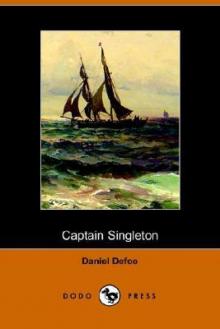 Captain Singleton
Captain Singleton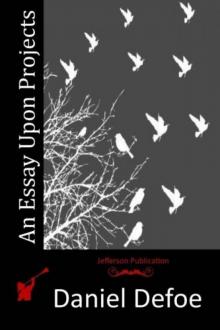 An Essay Upon Projects
An Essay Upon Projects Moll Flanders Moll Flanders Moll Flanders
Moll Flanders Moll Flanders Moll Flanders The Further Adventures of Robinson Crusoe
The Further Adventures of Robinson Crusoe Everybody's Business Is Nobody's Business
Everybody's Business Is Nobody's Business Robinson Crusoe
Robinson Crusoe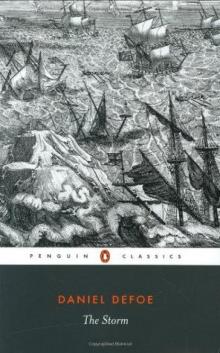 The Storm
The Storm The King of Pirates
The King of Pirates History of the Plague in London
History of the Plague in London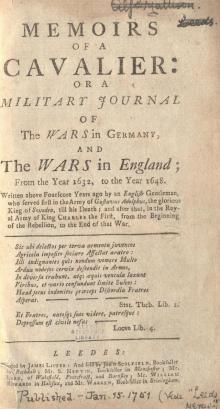 Memoirs of a Cavalier
Memoirs of a Cavalier_preview.jpg) The Life and Most Surprising Adventures of Robinson Crusoe, of York, Mariner (1801)
The Life and Most Surprising Adventures of Robinson Crusoe, of York, Mariner (1801)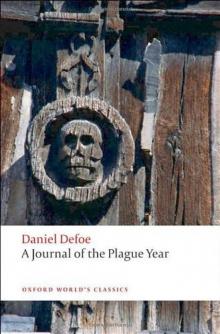 A Journal of the Plague Year
A Journal of the Plague Year_preview.jpg) The Life and Adventures of Robinson Crusoe (1808)
The Life and Adventures of Robinson Crusoe (1808)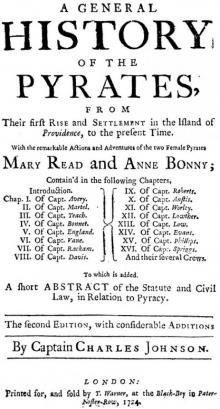 A General History of the Pyrates: / from their first rise and settlement in the island of Providence, to the present time
A General History of the Pyrates: / from their first rise and settlement in the island of Providence, to the present time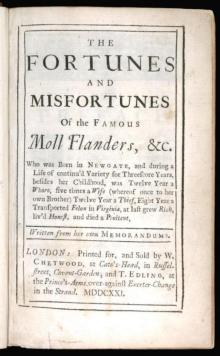 The Fortunes and Misfortunes of the Famous Moll Flanders
The Fortunes and Misfortunes of the Famous Moll Flanders_preview.jpg) The Fortunate Mistress (Parts 1 and 2)
The Fortunate Mistress (Parts 1 and 2) Robinson Crusoe — in Words of One Syllable
Robinson Crusoe — in Words of One Syllable From London to Land's End
From London to Land's End A New Voyage Round the World by a Course Never Sailed Before
A New Voyage Round the World by a Course Never Sailed Before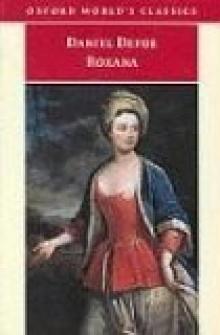 Roxana
Roxana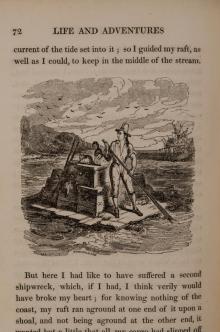 The Life and Adventures of Robinson Crusoe of York, Mariner, Volume 1
The Life and Adventures of Robinson Crusoe of York, Mariner, Volume 1_preview.jpg) Memoirs of Major Alexander Ramkins (1718)
Memoirs of Major Alexander Ramkins (1718)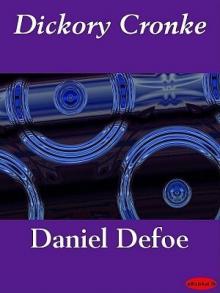 Dickory Cronke
Dickory Cronke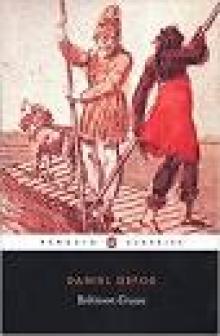 Robinson Crusoe (Penguin ed.)
Robinson Crusoe (Penguin ed.) Moll Flanders
Moll Flanders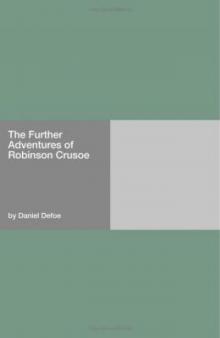 The Further Adventures of Robinson Crusoe rc-2
The Further Adventures of Robinson Crusoe rc-2